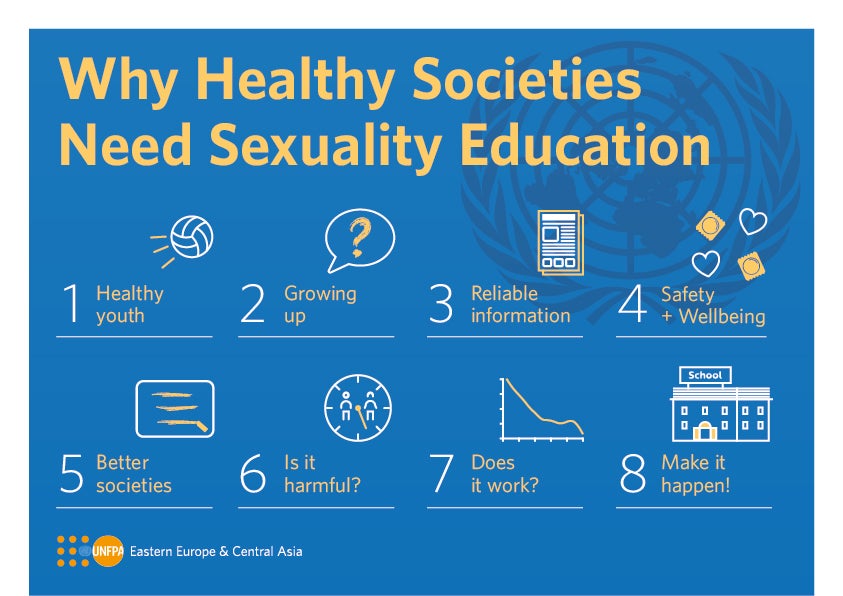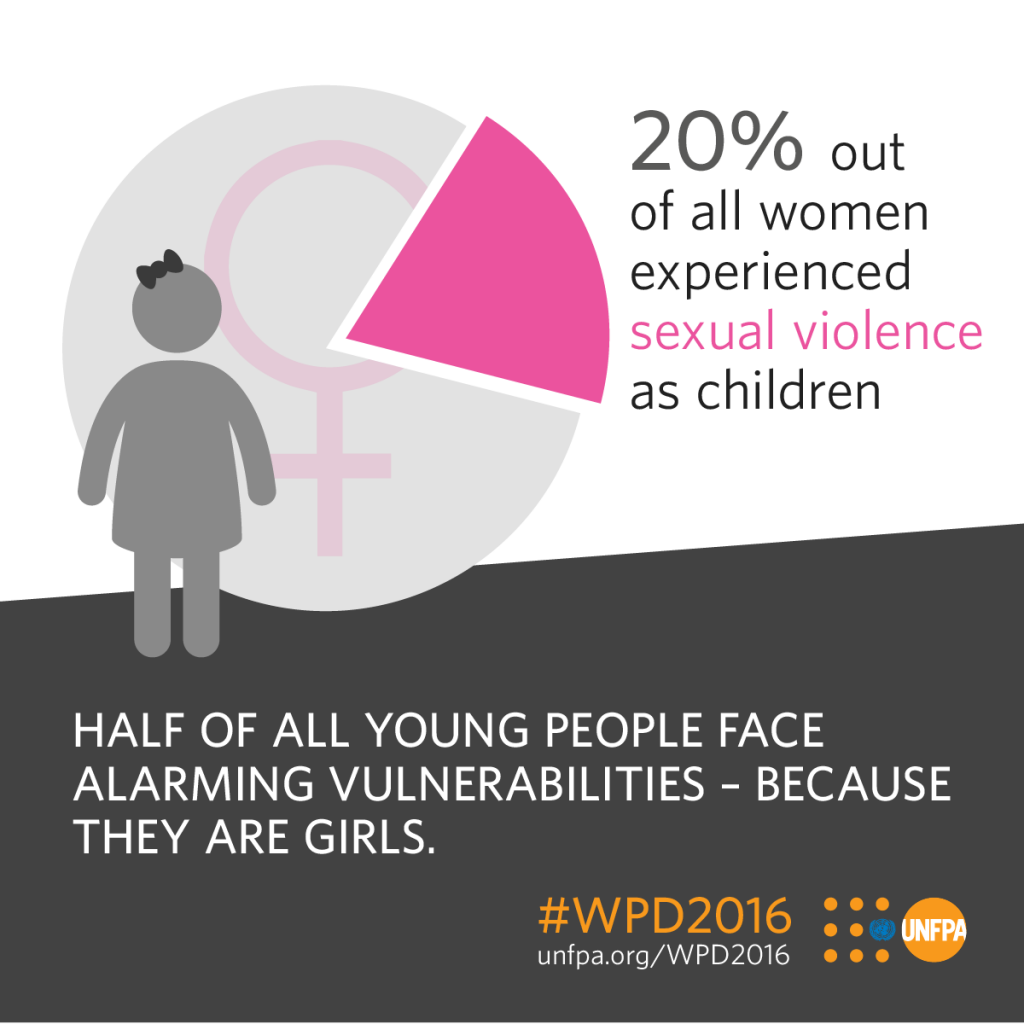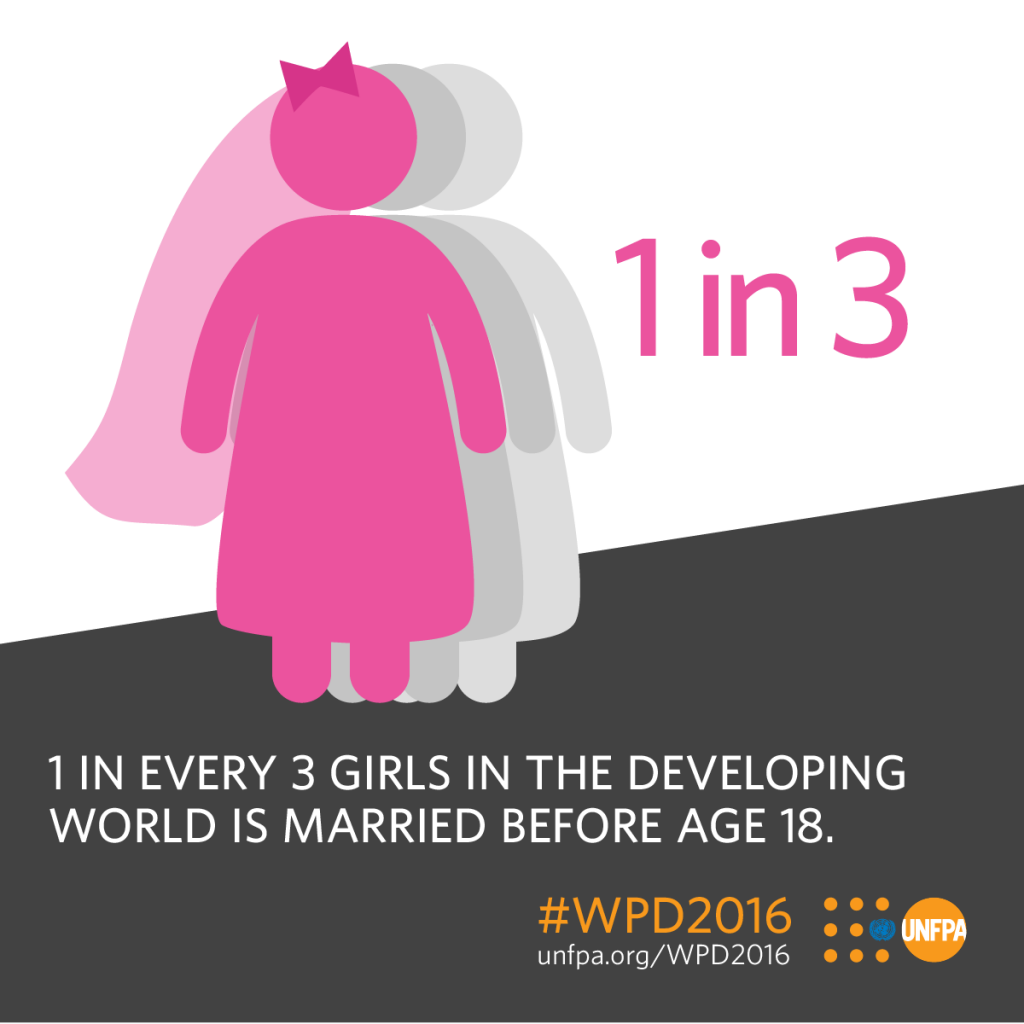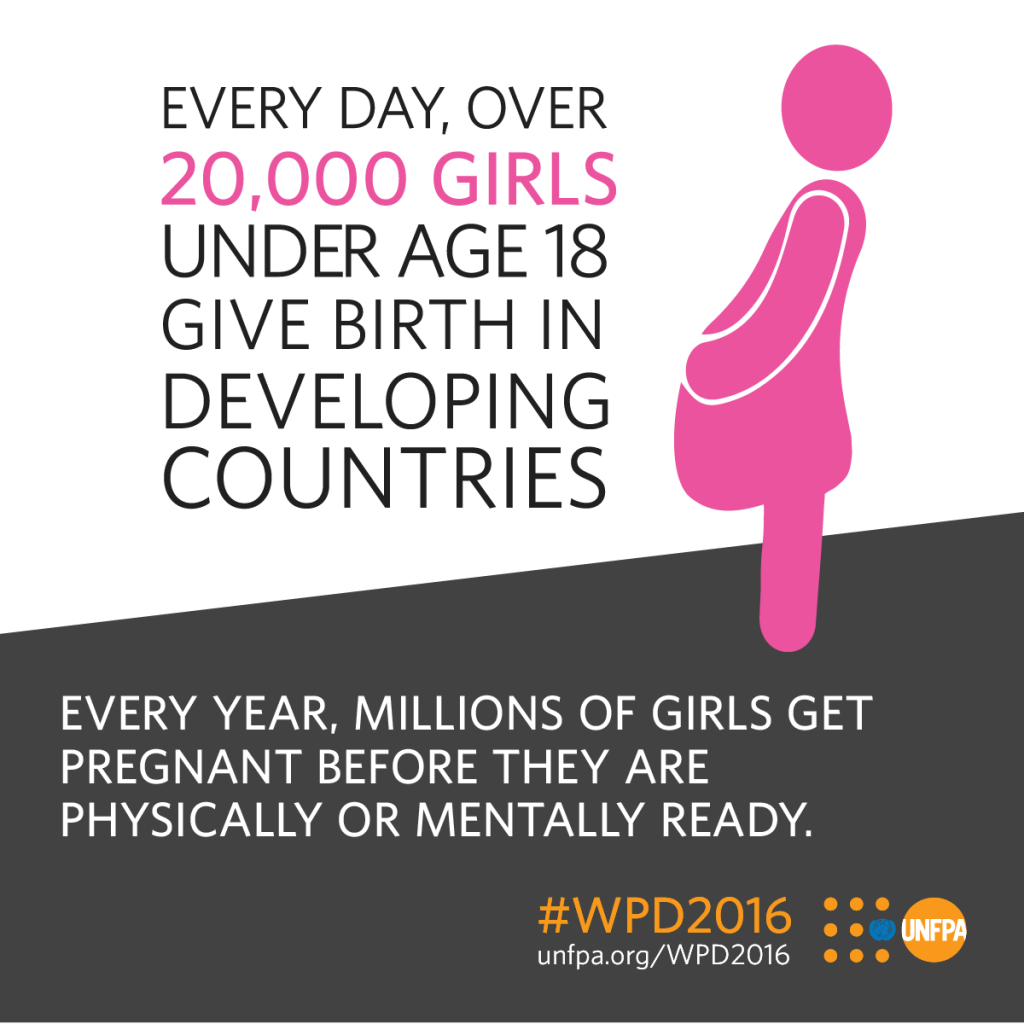PRESS-RELEASE
Realization of teenage girls’ potential will boost development and well-being of society!
On 11th of July United Nations Population Fund celebrates World Population Day. The topic of the World Population Day 2016 is ‘Investing into teenage girls’.
Why should we invest into teenage girls?
Teenage girls around the world face more and greater challenges than their male counterparts due to gender stereotypes and gender-based discrimination.
Every teenage girl has the right to a safe and successful transition into adulthood and the right to embrace the opportunities that the future holds for them. UNFPA, your United Nations Population Fund, is committed to promoting and protecting these rights and to supporting teenage girls to determine their own destinies. But when a teenage girl has the power, the means and the information to make her own decisions in life, she is more likely to realize her full potential and become a positive force for change in her home, community and nation.
New Sustainable Development agenda pays great attention to education. Quality education makes it possible for the teenage girls to find a job, earn decent salary and contribute to the economy of their countries.
To reach Sustainable Development Goals (SDGs) we need regularly consult with teenage girls and accommodate their interests and needs, paying equal attention to vulnerable teenage girls: ones with disability, from rural areas and national minorities, like roma girls.
Teenage girls should be looked at as active drivers of change, not the recipients. It is important to ensure their direct participation in reaching SDGs.
In the beginning of 2014 adolescents and youth aged 15-24 comprised 12,2% of Belarus population. These age group remains the most vulnerable as far as their sexual and reproductive health is concerned. In 2013 each 17thabortion was made by a teenage girl. In 2014 more than 50 % of HIV cases were diagnosed among adolescents and youth. There is lack of knowledge about sexual and reproductive health among Belarusian adolescents and youth. Introduction of sexual and reproductive health literacy into pupils and students curricular or development of Comprehensive Sexuality Education on national level will prevent teenage pregnancies, HIV and STIs.

In order teenage girls can invest in the future development of their countries we need to promote principles of gender equality and challenge gender stereotypes in the families, workplace, communities and stimulate women participation in the economy and entrepreneurship. By doing this in 2030 we will create conditions and opportunities for teenage girl potential realization for the benefit of the whole society.
Despite the fact that Belarusian women have higher level of education than Belarusian men -— 55 % of women and 38 % of men have university or college diploma, women tend to stay much longer at entry-levels of professional hierarchy and rarely hold leading positions.
Equal share of domestic duties between men and women, fathers taking parental leaves and spending more time with children create conditions for women to develop professionally and remain in profession. Creating parents friendly environment at work and treating mothers as a specialists with additional managerial skills will positively reflect on hiring and employing of women of reproductive age.
Statistics in Belarus
According to UNDP Gender Inequality Index Belarus takes 31st place from 188.
According to the national monitoring conducted by UNFPA in 2014 77 % of men and women once in life experienced either psychological (76,2 % women, 75,6 % men), physical (1 in 3 women, 1 in 4 men), sexual (18 % women, 12 % men) or economic (37 % women, 28 % men) types of domestic violence. Only 29,2 % victims of domestic violence seek help from psychologists, lawyers, health workers and legal authorities. More than 80% of women subject to domestic violence have children.
Employment rate among women aged 15-29 years - 52, men – 60 (2009).
54,7% women are involved into the economy of the country. There is 23 % average salary gap between men and women.
Minister of Information, Minister of Labour and Social Protection, Chair of National Statistical Committee and a Vice Prime Minister are women. Women make 30% of Belarusian Parliament.
As far as academic sector is concerned women make 66 % of university teaching staff and assistants, and only 23% of women are rectors and vice-rectors.
Men and women spend almost equal amount of time at work, nevertheless women are engaged into domestic duties 2 times more than men (4 hours and 36 minutes compared to 2 hours and 17 minutes). For example, 90 % of women and 44% of men cook, 83 % of women and 31 % of men wash the dishes, 82 % of women and 44 % of men clean up their apartments. Women spend more than 2 hours per day with children under 10 y. o., when men only 28 minutes per day. A far as childcare of a child under 10 is concerned 78% of women and 59% of men are involved.
Statistics in the world:
Violence against women and girls is one of the world’s most prevalent human rights abuses. Half of all sexual assaults are committed against girls aged 15 or younger. Studies show that about 20 per cent of women experienced sexual violence as girls.
Too often, these crimes go unpunished. They may even be tacitly endorsed by sexist attitudes and practices like child marriage.

A shocking one third of all girls in the developing world (excluding China) are married off while still children. This means the futures of 47,700 girls are derailed every day.
These girls often face a cascade of other human rights abuses. They are more vulnerable to physical and sexual violence. They are often pulled from school to take on domestic responsibilities. They are less able to advocate for themselves and their rights.

Every day, over 20,000 girls under age 18 give birth in developing countries – over 7 million a year.
Adolescent pregnancy is usually not the result of a deliberate choice. Rather, it is the consequence of an absence of choices. Girls who become pregnant tend to be poorer and to have little or no access to sexual and reproductive health care and information.
And pregnancy compounds their vulnerability, taking an enormous toll on their educations and future earning potential. It also vastly increases the risks to their health. In fact, complications from pregnancy and childbirth are the second leading cause of death among girls between 15 and 19 years old.
United Nations Population Fund invites all the parties involved into realization of the Sustainable Development Agenda 2015-2030 to invest into the future and well-being of teenage girls: governments, business and civil society.
For more information please contact Ahniya Asanovich, UNFPA in Belarus Communication Specialist, tel. in Minsk: 327 45 27, mobile: 8 029 178 67 00 or by email: asanovich@unfpa.org.


